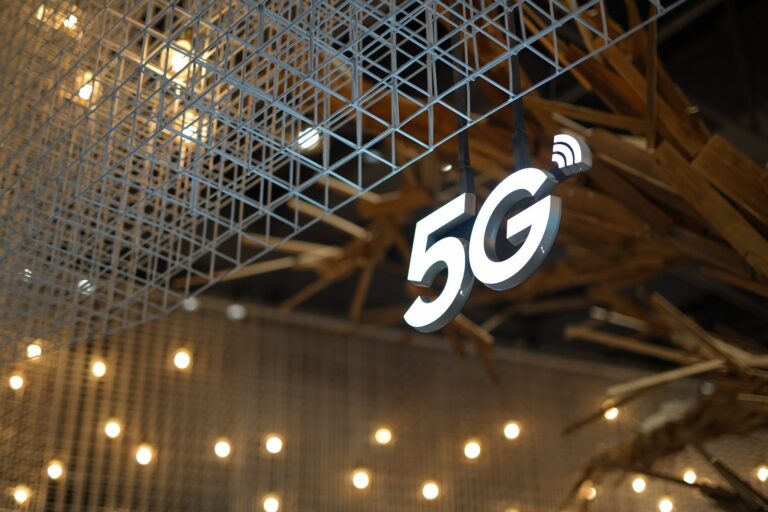The trend of more and more devices being connected via the Internet of Things (IoT) will continue to increase with advancements in 5G technology.
Increased speed and reduced latency will enable autonomous devices to communicate with each other faster and more reliably, making decisions and subsequent actions more efficient.
Improved speed and reliability mean increased security and reduced costs.
Another advantage of 5G networks over 4G is that they offer new levels of connectivity and device communication with faster speeds, lower latency and more reliable connections, enabling performance that allows far more devices to be connected to the network and data transfer over greater distances.
But before we go any further, let’s take a look at what these two technologies specifically are and what they’re for.
What is IoT and what is it for?
The best way to know what IoT is is to know what it is for: direct communication between devices has countless applications to streamline, improve and automate processes of different nature in different sectors: industrial processes, autonomous mobility and the digitalization of different sectors.
At this point, 5G will come back as a support for high-powered infrastructure to ensure safer and more stable connections for thousands of smart devices at the same time.
What is 5G and what is it for?
5G is the fifth generation of mobile networks, an improved and enhanced version of its predecessor, 4G. It promises to be truly disruptive by delivering 1,000 times the capacity that infrastructure was able to deliver in 2010.
Until 4G, mobile networks were designed by humans and for humans, but from 2G onwards, things started to be connected. 4G was the first version developed with the IoT in mind too, which have different requirements and needs than humans.
One example is NB-IoT, which focuses on device simplicity (and therefore cost) and aims to maximise battery life, extending it to an unexpected limit of over 10 years.
This comes at the expense of speed and latency, but for certain IoT applications speed and latency are not important, simplicity and battery life are, and 5G continues to improve on these aspects.
As mentioned above, the technology will support the growing number of connected devices in a variety of sectors, including Industry 4.0, telemedicine, education, streaming broadcasting, connected vehicles, and smart cities.
Why is 5G important for IoT?
The impact of 5G will be significant in the amount of devices connected simultaneously in different areas.
For example, at the household level, appliances, security, and entertainment systems improve comfort at home.
The importance of low latency will be particularly evident in sectors such as industry and healthcare, where being able to operate remotely in near real-time can be critical in certain situations.
4G has already made an important step forward, but 5G will evolve the network and increase the number of machines connected to it by an order of magnitude. To put this in context, while today as a general rule there is less than one IoT device connected to a mobile network per “mobile” user, this will change rapidly and in a few years we may see two or even three IoT devices connected per “mobile” user.
Examples of applications where 5G and IoT complement each other
Let’s look at some examples of how 5G developments will benefit IoT.
Connected Car
For connected cars, understood as vehicles that can access the Internet and send and receive data, 5G and the rise of the Internet of Things can help make roads safer while reducing costs and pollution.
Thanks to their ability to predict dangerous situations, reports estimate that connected cars could save 11,000 lives and prevent 260,000 accidents annually around the world, resulting in reduced health problems and even economic losses.
Additionally, it will prevent traffic jams and allow drivers to reroute using alternative routes, thus reducing pollution caused by traffic congestion.
Industry 4.0
Advances in 5G and IoT will enable advances in the industrial sector by adapting operator tasks to machine work and the data they generate. Some of the positive aspects arising from connectivity and the integration of the production sector include:
- Real-time monitoring of both energy consumption and emissions improves energy efficiency.
- Reducing costs and improving service makes your business more profitable.
- Machine control to reduce risks and accidents.
- It minimizes potential human risks and improves production quality by reducing manual labor.
Telemedicine
As already mentioned, 5G has virtually zero latency, making it possible to carry out remote work in real time, for example performing surgical interventions thousands of kilometers away.
IoT allows patients to be monitored remotely, which is especially useful for those with chronic illnesses or the elderly.
Conclusion
With an increasing number of connected devices able to transmit information more quickly, various sectors will benefit in many areas, including safety, sustainability and productivity.


